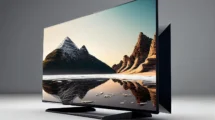Washington – A new study has claimed that cosmic rays may be one of the many hurdles that the astronauts may face on long flights. Quite possibly, it could be something they would end up living the rest of their lives with.
The research claims that long term exposure to cosmic rays may result in dementia like, cognitive impairments. In particular, they were pointing to the planned 2.5 year long journeys to Mars.
The study was performed on lab mice, which were exposed to particles similar to those in cosmic rays. The result was a decline in cognition and sometimes integral and structural changes to brain cells, even at locations where nerve impulses were sent and received. NASA funded the detailed study, for identifying what these hurdles would mean for the astronauts.
Cosmic rays are thought to come from remnants of exploding stars, which, even though, are light years away, can still penetrate through space-time very quickly. Even after travelling those long distances, they still have enough energy to penetrate the spacecraft and astronaut bodies. Earth, however, protects itself with the help of a layer of plasma known as the magnetosphere.
One of the authors, Dr. Limoli, stated in the study: “Astronauts may incur cognitive impairments that lead to performance decrements, confusion, increased anxiety and long-term problems with cognitive health. This could compromise mission critical activities, especially if unanticipated situations arise during deep space flight.” The study has been published in Science Advances.
The mice in the study had received genetic alterations to have neurons of green fluorescent. These were then used to identify structural changes in the brain due to exposure to rays. The tests had been conducted at NASA’s space radiation laboratory at Brookhaven National Laboratory in New York. The results were analyzed after a gap of six weeks.
Apart from the neural changes, the mice showed decreased performance in memory tests. There was also a significant decline in curiosity and responses based on objects placed near them. The experiments were conducted after NASA announced that it is developing capabilities to send astronauts to Mars in 2030.





Add Comment